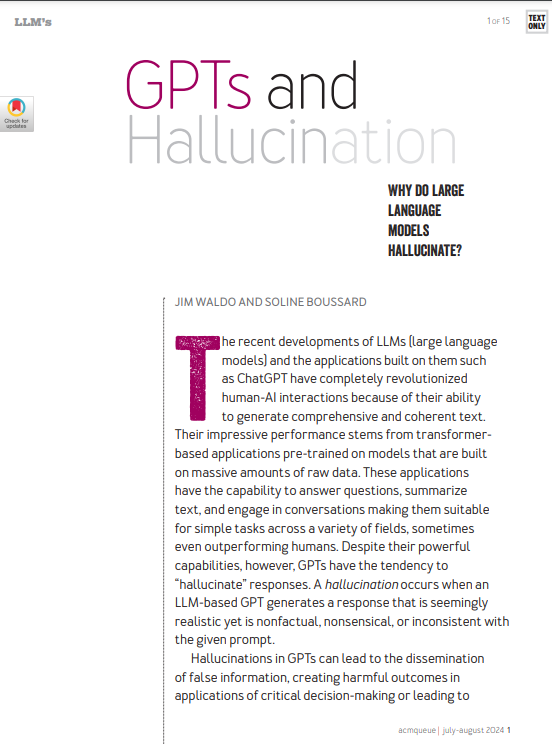The rise of large language models (LLM), especially the widespread use of applications such as ChatGPT, has completely changed the human-computer interaction model. LLM demonstrates an impressive ability to generate coherent, comprehensive text. However, the editor of Downcodes found that LLM also has the problem of "hallucination", that is, it generates content that looks real but is fictitious, meaningless, or inconsistent with the prompts. Researchers at Harvard University have conducted in-depth research on this, trying to reveal the causes and solutions to the LLM "illusion".
The emergence of large language models (LLM), especially the popularity of applications such as ChatGPT, has completely changed the way human-computer interaction is done. The models' ability to generate coherent and comprehensive text is impressive. However, despite its powerful capabilities, LLM is prone to "hallucinations", that is, generating content that appears real but is actually fictitious, meaningless, or inconsistent with the prompts.

Researchers at Harvard University conducted an in-depth study of the LLM "hallucination" phenomenon and found that its root lies in the working principle of LLM. LLM builds a probabilistic model by performing machine learning on massive text data, and predicts the next word based on the probability of word co-occurrence. In other words, LLM does not really understand the meaning of the language, but makes predictions based on statistical probabilities.
Researchers liken LLM to "crowdsourcing" and believe that LLM is actually outputting "network consensus." Just like platforms like Wikipedia or Reddit, LLM extracts information from large amounts of text data and generates the most common answers. Since most languages are used to describe the world, the answers generated by LLM are usually accurate.
However, "illusions" can occur when LLM encounters topics that are vague, controversial, or lack consensus. To test this hypothesis, the researchers designed a series of experiments to test the performance of different LLMs when dealing with different topics. Experimental results show that LLM performs well when dealing with common topics, but the accuracy drops significantly when dealing with ambiguous or controversial topics.
This study shows that although LLM is a powerful tool, its accuracy depends on the quality and quantity of training data. When using LLM, especially when dealing with ambiguous or controversial topics, its output needs to be treated with caution. This research also provides directions for the future development of LLM, which is the need to improve LLM's ability to handle ambiguous and controversial topics and improve the interpretability of its output results.
Paper address: https://dl.acm.org/doi/pdf/10.1145/3688007
The Harvard study provides valuable insights into understanding and improving LLM. It also reminds us that we need to use LLM with caution, especially when dealing with complex or controversial topics, and we should critically evaluate its output results. The future development direction of LLM should focus on improving its ability to handle fuzzy information and improve interpretability. The editor of Downcodes hopes that this research can promote the development of LLM technology in a more reliable and trustworthy direction.